This article explains what happens when the Track every option changes in Edit/View Variable. The options for Track every are: Day, 4 Hours, Hour, 30 Minutes, 15 Minutes, 5 Minutes, and Minute. Each of these has their own data table. This feature explains how you can transfer your data from one of those data tables to the other so that you can keep your data in a different frequency (daily, hourly, minutely, etc.)
When moving data the following rules apply:
- All database changes are tracked by audit trail, whether create, update or delete.
- Audit user is whoever is logged on plus "_VTC" added to the end of their user name.
- All data points for the new variable frequency will be deleted from its' data table.
- Values are migrated as well as result comments, additional info is not migrated.
- There is no date range, it will migrate all data for the variable, this means that it could take some significant time to migrate data.
- If the original frequency is lower than the new frequency (i.e. Hour to 15 Min):
- Since this is a low frequency to a high frequency each value is moved to new table.
- Time stamp is determined by each value moved to the new table.
- If the original frequency is Day, then a time can be entered other than midnight.
- If the original frequency is higher than the new frequency (i.e. Hour to Day):
- Whatever statistic is selected is applied to all data points
- The following statistic are used to migrate multiple data points into one value per time period:
- Text Parameter Type - First and Last
- Parameter Type - First, Last, Min, Max, Total, and Average
- Time stamp is determined by statistic used:
- First, Last, Min, and Max statistic - the time stamp will be set to the one value migrate
- Sum and Average statistic - the time stamp will be set to the beginning of the time slot
These are examples of time stamps based on statistics going from a Minute frequency to an Hour frequency
| Times |
Values |
First |
Last |
Total |
Average |
Min |
Max |
| 8:00 |
|
|
|
30.02 |
7.505 |
|
|
| 8:05 |
7.3 |
7.3 |
|
|
|
|
|
| 8:17 |
8.0 |
|
|
|
|
|
8.0 |
| 8:22 |
7.22 |
|
|
|
|
7.22 |
|
| 8:55 |
7.5 |
|
7.5 |
|
|
|
|
-
Whenever the First, Last, Min, or Max happen, that will be the time stamp and value.
-
Total and Average will have the time stamp at the beginning of the hour since it is going to an Hourly frequency.
Example 1: Changing the Track Every from Daily to Hourly
V8005 is a Daily Parameter that we now need to track Hourly. Previously, we took a reading at 8AM so we want to store the one value for the day in the 8AM slot.
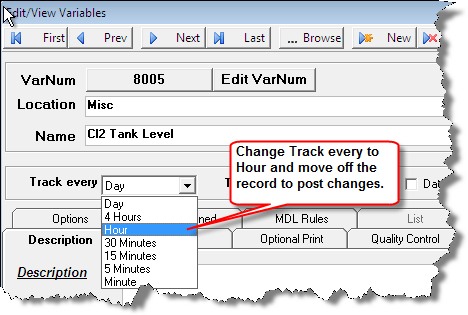
You will be prompted with the following screen.
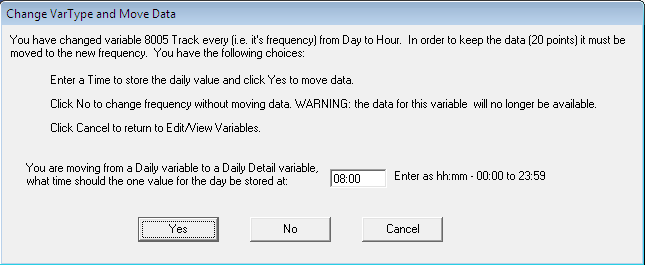
Click Yes - The 20 daily values will be placed at 8AM for each of the days that have data:
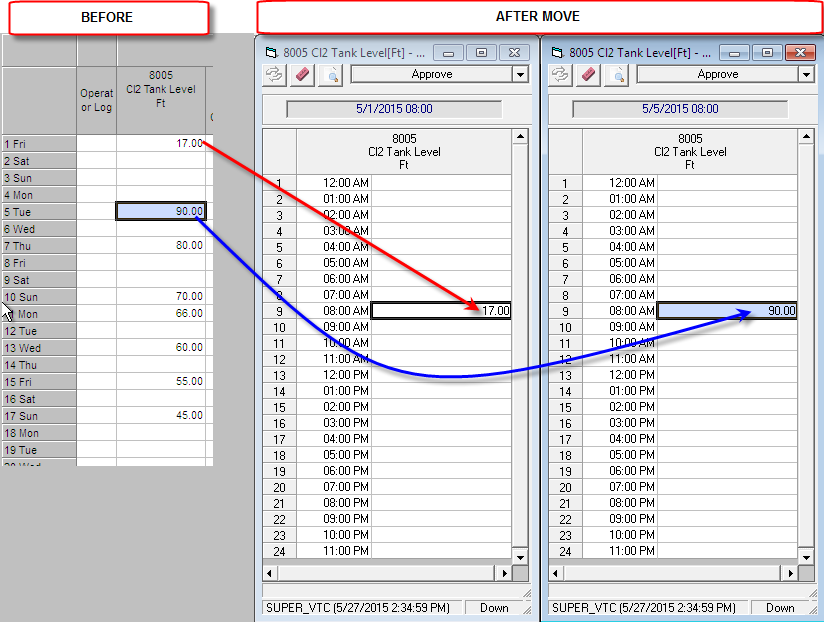
Example 2: Changing the Track Every from 4 Hour to Day example:
The Summarize Statistic is how you want all the hourly data points for one day to be summarized into one data point for each day. In this example, we will calculate and store the max of all the 4 hour data values for each day.
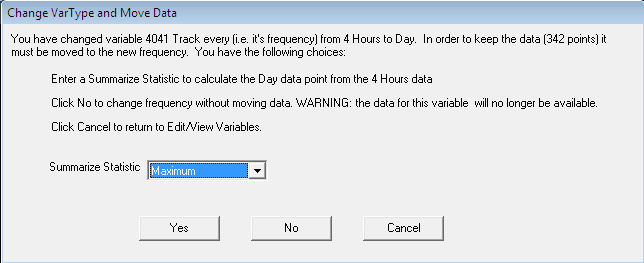
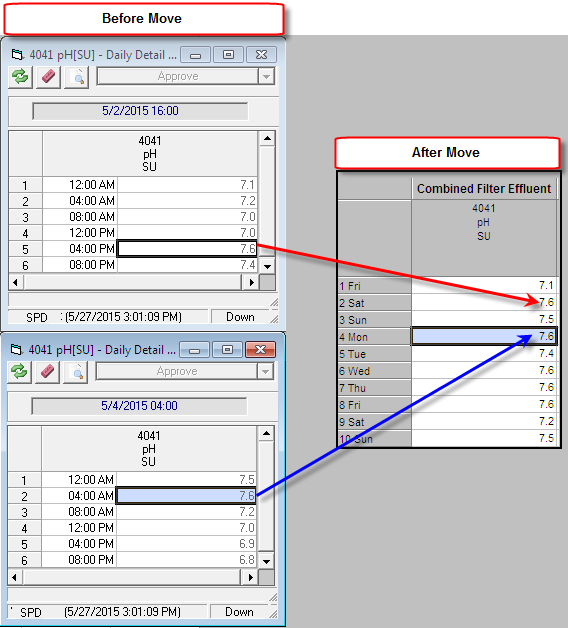
Example 3: Change Variable Type from 4 Hour to Hourly example:
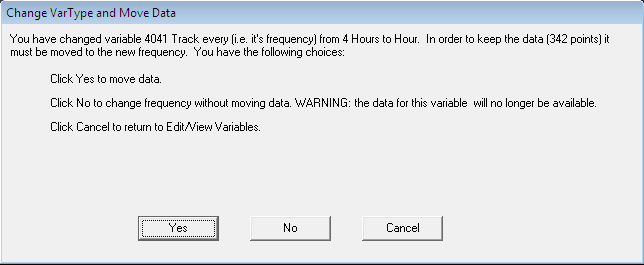
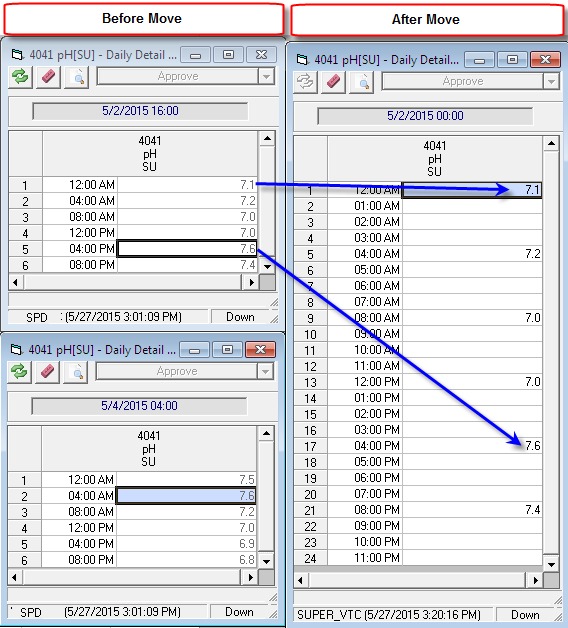
Tech Notes:
- When data is moved to the destination table it is left (orphaned) in the orginal table. Therefore, if you change the Track Every and subsuquently change it back and click on No, you will recover your orginal data.